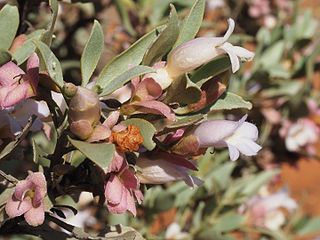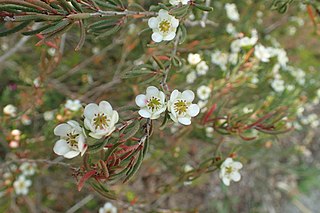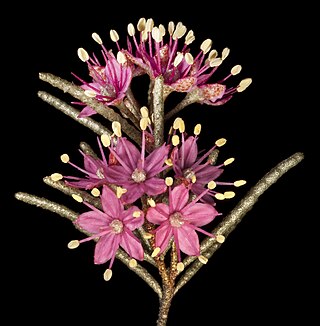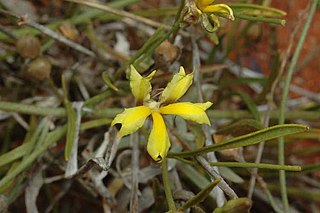
William Harry Tietkens, known as "Harry Tietkens", explorer and naturalist, was born in England and emigrated to Australia in 1859. Tietkens was second in command to Ernest Giles on expeditions to Central Australia in 1873 and on a journey from Beltana, South Australia to Perth, Western Australia in 1875. In 1889 Tietkens led his own expedition west of Alice Springs to the vicinity of the Western Australian border. This expedition discovered Lake Macdonald, the Kintore Range, Mount Leisler, Mount Rennie, the Cleland Hills, defined the western borders of Lake Amadeus, and photographed Uluru and Kata Tjuta for the first time. The expedition collected new species of plants and rock samples allowing the South Australian government geologist to compile a 'geological sketch' of the country traversed. Tietkens was elected a fellow of the Royal Geographical Society on his return. Specimens of 250 plant species were collected, although only 8 were new to science, and in 1890, Ferdinand von Mueller and Ralph Tate named Eremophila tietkensii in his honour.

Darwinia neildiana, commonly known as fringed bell, is a species of flowering plant in the family Myrtaceae and is endemic to the south-west of Western Australia. It is a dwarf, spreading or semi-erect shrub that typically grows to a height of 0.2–1 m and has leaves about 10 mm (0.39 in) long. Its are flowers very small, arranged in clusters of up to 60, surrounded by green bracts that turn red as they age, the inflorescence 20–30 mm (0.79–1.18 in) wide. Flowering occurs between August and December. The species was first formally described by Victorian Government botanist Ferdinand von Mueller in 1875 in Fragmenta Phytographiae Australiae. The specific epithet (neildiana) honours James Edward Neild. It grows among rocks in the Avon Wheatbelt, Geraldton Sandplains and Swan Coastal Plain biogeographic regions of south-western Western Australia.
Achnophora is a genus of flowering plants in the family Asteraceae described as a genus in 1883.
Dimorphocoma is a genus of flowering plants in the family Asteraceae.

Darwinia micropetala, commonly known as small darwinia, is a species of flowering plant in the family Myrtaceae and is endemic to south-eastern continental Australia. It is a small, erect shrub with linear leaves, and heads of white to pink flowers.

Darwinia diosmoides is a species of flowering plant in the myrtle family Myrtaceae and is endemic to the south-west of Western Australia. It is a dense, erect shrub with linear leaves and more or less spherical heads of white flowers.

Eremophila tietkensii is a flowering plant in the figwort family, Scrophulariaceae and is endemic to Australia. It is a rounded to flat-topped shrub with grey-green leaves, usually pinkish-purple sepals and mauve, pink or lilac-coloured petals. It is mostly found in Western Australia but also occurs in the far west of the Northern Territory.
Verticordia rennieana is a flowering plant in the myrtle family, Myrtaceae and is endemic to the south-west of Western Australia. It is an openly branched shrub with small, narrow, warty leaves and pink and silvery-white flowers in spring and summer.

Darwinia helichrysoides is a species of flowering plant in the myrtle family Myrtaceae and is endemic to a small area in south-west of Western Australia. It is a slender shrub with linear leaves and drooping heads of about 4 red and green flowers surrounded by many glabrous bracts.
Calytrix merrelliana is a species of plant in the myrtle family Myrtaceae that is endemic to Western Australia.
Calytrix watsonii is a species of plant in the myrtle family Myrtaceae that is endemic to Western Australia.

Chamelaucium axillare, commonly known as Esperance waxflower, is a species of flowering plant in the family Myrtaceae endemic to Western Australia.
Micromyrtus helmsii is a species of flowering plant in the myrtle family, Myrtaceae and is endemic to inland areas of Australia. It is a slender, erect or spreading shrub with overlapping, decussate, oblong leaves, and flowers with about 7 stamens, arranged singly in leaf axils.

Johann George Luehmann was an Australian botanist, who served as the Assistant Botanist and, later, as the Curator at the National Herbarium of Victoria, and who also, from 1896, served as the Government Botanist of Victoria.

The Tietkens expedition of 1889 was led by William Tietkens. It covered territory west of Alice Springs to the vicinity of the Western Australian border.

Phebalium canaliculatum is a species of erect shrub that is endemic to the southwest of Western Australia. It is more or less covered with silvery and rust-coloured scales and has thin, cylindrical leaves and dark pink to pale mauve flowers in umbels on the ends of branches.

Ptilotus schwartzii is a grass-like plant in the Amaranthaceae family.

Goodenia fascicularis, commonly known as silky goodenia, is a species of flowering plant in the family Goodeniaceae and is widely distributed in eastern continental Australia. It is an ascending perennial herb with linear to egg-shaped leaves and racemes of yellow flowers.
Teucrium grandiusculum is a species of flowering plant in the family Lamiaceae and is endemic to central Australia. It is a perennial herb or shrub with toothed, egg-shaped leaves and white flowers.
Gompholobium simplicifolium is a species of flowering plant in the pea family Fabaceae and is endemic arid part of Western Australia and the Northern Territory. It is an erect or spreading shrub with cylindrical leaves and orange-yellow, pea-like flowers.











